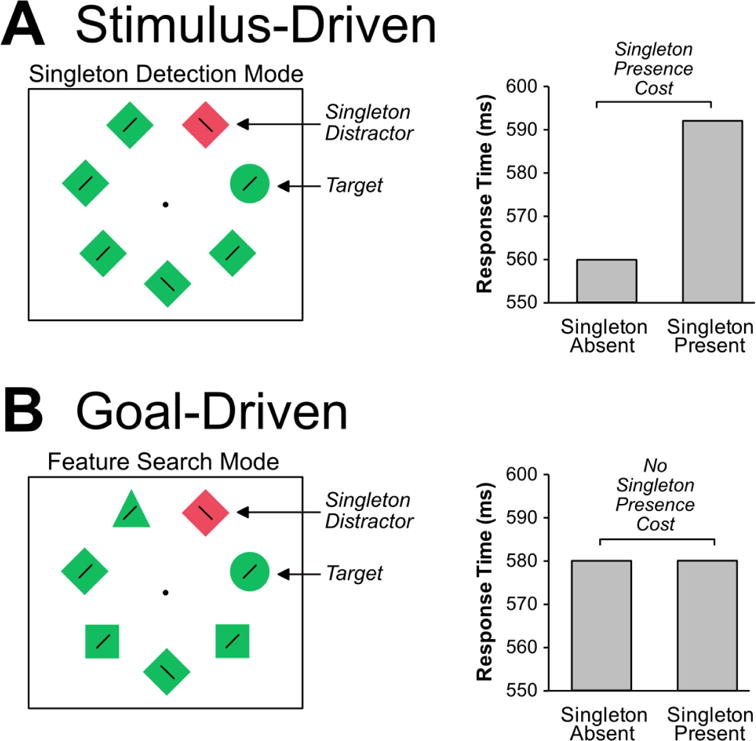Figure 2.

Conflicting results in a typical attention capture task. In both versions, participants search for the green circle and make a speeded response indicating the tilt of a line inside (left or right). On half of trials, a red singleton appears at a nontarget location. (A) Stimulus-driven theorists frequently use a version of the task where the target circle appears amongst homogenous distractors (i.e., all diamonds). This leads a large singleton presence cost, indicating capture. (B) Goal-driven theorists use a version of the task where the circle target appears amongst heterogeneous distractors. This leads to no singleton presence cost, indicating no capture. These stimuli and data are illustrative, based on a combination of several studies.
